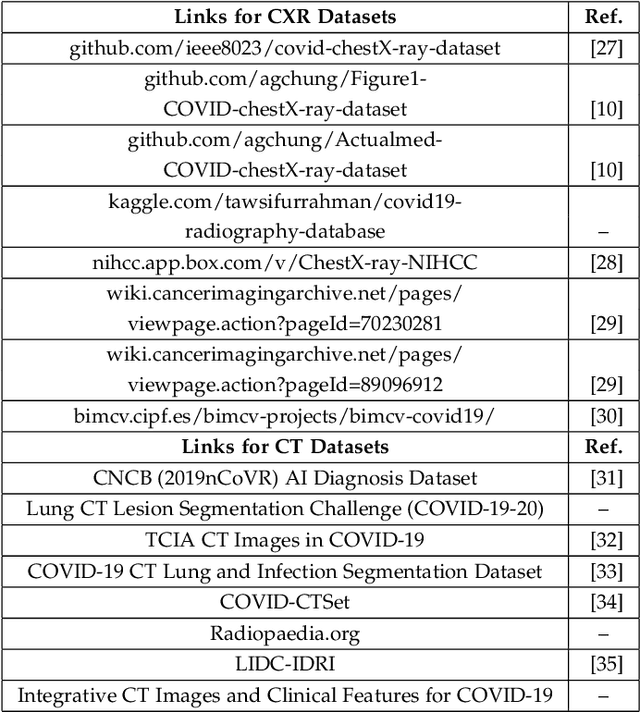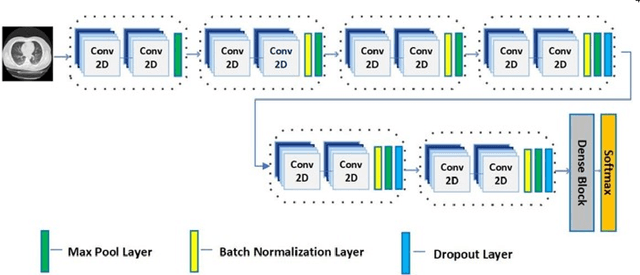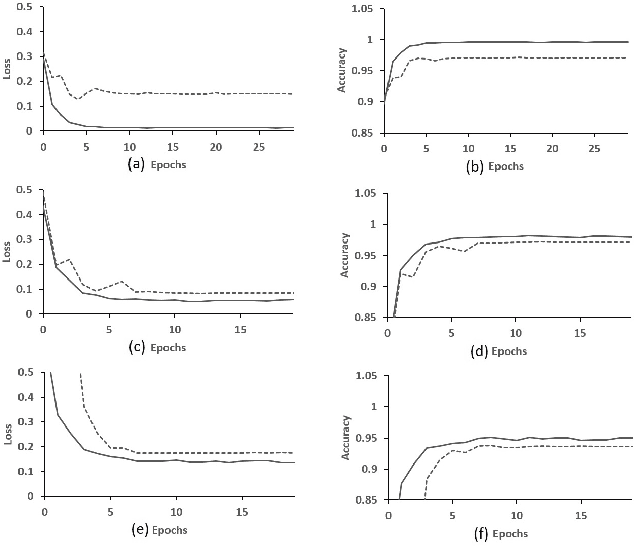Nita Parekh
Explainable and Lightweight Model for COVID-19 Detection Using Chest Radiology Images
Dec 28, 2022



Abstract:Deep learning (DL) analysis of Chest X-ray (CXR) and Computed tomography (CT) images has garnered a lot of attention in recent times due to the COVID-19 pandemic. Convolutional Neural Networks (CNNs) are well suited for the image analysis tasks when trained on humongous amounts of data. Applications developed for medical image analysis require high sensitivity and precision compared to any other fields. Most of the tools proposed for detection of COVID-19 claims to have high sensitivity and recalls but have failed to generalize and perform when tested on unseen datasets. This encouraged us to develop a CNN model, analyze and understand the performance of it by visualizing the predictions of the model using class activation maps generated using (Gradient-weighted Class Activation Mapping) Grad-CAM technique. This study provides a detailed discussion of the success and failure of the proposed model at an image level. Performance of the model is compared with state-of-the-art DL models and shown to be comparable. The data and code used are available at https://github.com/aleesuss/c19.
Evaluating Generalizability of Deep Learning Models Using Indian-COVID-19 CT Dataset
Dec 28, 2022Abstract:Computer tomography (CT) have been routinely used for the diagnosis of lung diseases and recently, during the pandemic, for detecting the infectivity and severity of COVID-19 disease. One of the major concerns in using ma-chine learning (ML) approaches for automatic processing of CT scan images in clinical setting is that these methods are trained on limited and biased sub-sets of publicly available COVID-19 data. This has raised concerns regarding the generalizability of these models on external datasets, not seen by the model during training. To address some of these issues, in this work CT scan images from confirmed COVID-19 data obtained from one of the largest public repositories, COVIDx CT 2A were used for training and internal vali-dation of machine learning models. For the external validation we generated Indian-COVID-19 CT dataset, an open-source repository containing 3D CT volumes and 12096 chest CT images from 288 COVID-19 patients from In-dia. Comparative performance evaluation of four state-of-the-art machine learning models, viz., a lightweight convolutional neural network (CNN), and three other CNN based deep learning (DL) models such as VGG-16, ResNet-50 and Inception-v3 in classifying CT images into three classes, viz., normal, non-covid pneumonia, and COVID-19 is carried out on these two datasets. Our analysis showed that the performance of all the models is comparable on the hold-out COVIDx CT 2A test set with 90% - 99% accuracies (96% for CNN), while on the external Indian-COVID-19 CT dataset a drop in the performance is observed for all the models (8% - 19%). The traditional ma-chine learning model, CNN performed the best on the external dataset (accu-racy 88%) in comparison to the deep learning models, indicating that a light-weight CNN is better generalizable on unseen data. The data and code are made available at https://github.com/aleesuss/c19.
 Add to Chrome
Add to Chrome Add to Firefox
Add to Firefox Add to Edge
Add to Edge